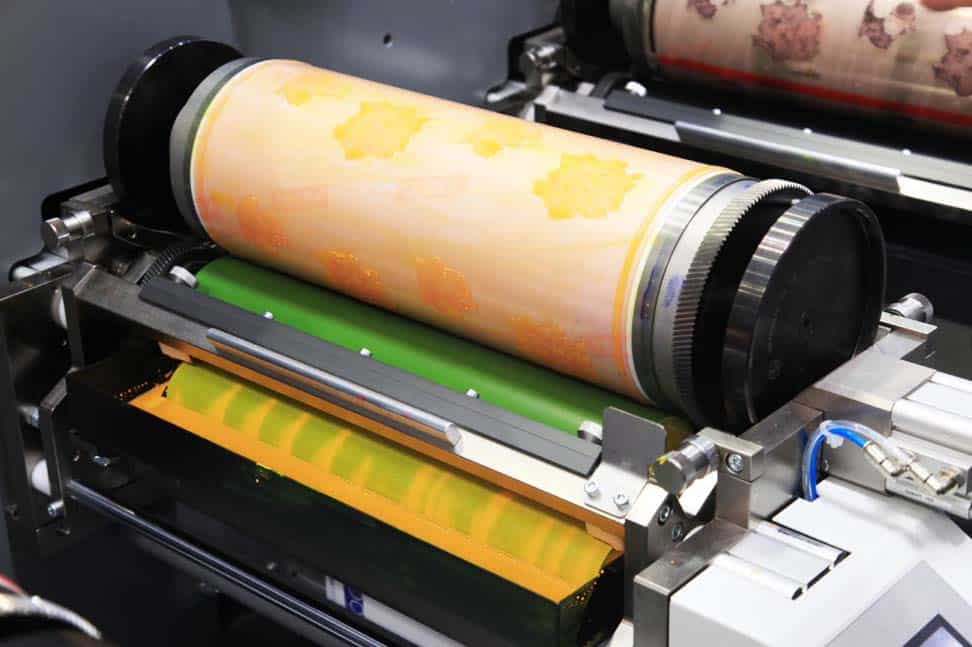Often going by the abbreviation “flexo,” flexography is the name given to a printing process utilizing a flexible relief plate. It’s a modern-day version of letterpress printing and considered by many to be the best kind of non-digital printing for large orders, and long print runs.
But is it always appropriate for each printing job? Are there cons to consider as well?

Pros
1.) It’s cost-efficient. Flexographic printing comparatively comes at an economical cost, which is partly because labor costs are low. Because of the quick turnaround times and the relatively low cost of printing materials such as ink, flexography is significantly cheaper than other printing methods.
Many businesses today use flexography because it is particularly suitable for large printing orders where printing costs are a concern.
2.) It’s quick. Since flexography uses a printing material that is web-fed, the printer can easily make the best use of its space, fitting the design both vertically and horizontally, and as many times as desired. Flexographic printers, therefore, are capable of churning out a lot of content every hour.
The fastest flexographic printers today can output 2,000 feet of printing every minute, which is rather impressive.
3.) It’s highly automated. One of the reasons labor costs are comparatively low in flexography printing is because the entire process is highly automated once you press the ‘start’ button. The only thing you need to worry about is inputting the material into the device. From there, the machine will pull the material and press the ink seamlessly.
After it prints the label has, the cutting die automatically separates each design according to its required size. In other forms of printing, some of the steps above require human intervention.
4.) Works on many materials. Flexographic printing is suitable for any substrate like cellophane, plastic, and paper. Because of that, it is the first choice for food packaging and containers for other consumer packaged goods. For example, most cardboard boxes and brown paper bag designs use flexographic printing.
Cons
1.) Not the best for smaller jobs. Flexography is typically useful for large printing orders. It serves little purpose when you have to invest a fair amount of time into designing plates and go through the time-consuming set up to print out a small order.
However, some businesses do opt for flexographic printing even if they have smaller orders – as long as the number of plates will see some use in the future, that is. The plate design and creation is time-consuming, which many businesses see detrimental to their goals unless the printing order is relatively large.
2.) Setup is usually time-consuming. Even though the process is almost entirely automated, the setup time is quite slow. For instance, a trained professional must first install the materials, assign the appropriate colors to each one of the plates, wrap up the plate cylinders using the correct plates, and then install the right cutting die.
Again, for a small order, it may not be worth your while (or your time) to set it all up manually.
3.) Not the most advanced form of printing. In the modern digital printing world, where extraordinary designs are the norm, flexography isn’t ideal for producing complicated and extensive pieces of artwork. If intricate details are essential, 3d printing or screenprinting are more reliable choices.
- Tulip Mania – The Story of One of History’s Worst Financial Bubbles - May 15, 2022
- The True Story of Rapunzel - February 22, 2022
- The Blue Fugates: A Kentucky Family Born with Blue Skin - August 17, 2021